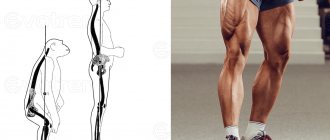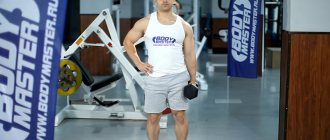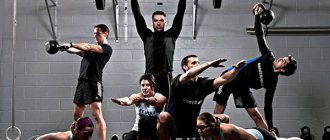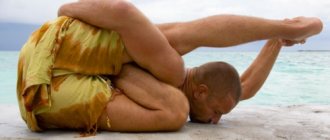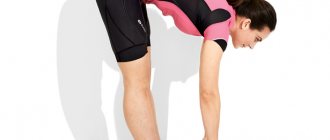I want to develop flexibility for at least three reasons: health, mobility and lightness. Tightness, muscle blocks, spasms and difficulty breathing, joint pain and even depression can be a consequence of insufficient flexibility. Flexibility is essential for everyday and professional life. But the main thing is that flexibility makes you feel easy and at ease. The key to flexibility is exercise, nutrition and breathing. This article provides the basic principles.
It is in this story that we will give some recommendations for achieving flexibility through exercise.
Dialogue
We tend to perceive the body as an instrument and try to control it without listening to sensations. But the body, in addition to sensitivity and impulse conductivity, also has intelligence. Therefore, conduct a dialogue with him on equal terms.
Imagine bending toward your feet from a standing position and pushing into the tension. Don't try to resolve the issue by force. Stupor may occur due to insufficient pelvic tilt. In this case, push your heels out to the sides to release the hip joints - the pelvis will sink deeper. Then tension may appear in the X-shaped popliteal ligaments - bend your knees slightly. You may feel tightness in the thoracic region - use yoga breathing to relax the intercostal muscles. The neck is unblocked by clavicular breathing, the ankles are unblocked by a change in the center of gravity, etc.
Bridge stretching
Helps strengthen the muscles of the neck, spinal column and hips. The correct technique is as follows:
- Lean back in your chair with your legs tucked under you.
- Slowly rise up, leaning only on your shoulders.
- Fix your body for 30 seconds.
The exercise shows excellent results, so three repetitions will be enough.
Reading reasons
Compensatory tensions will go away when you solve the problem that gave rise to them. How to understand the reasons:
- explore the sensations in your body more deeply;
- Observe your body habits;
- try to sit, walk, bend over correctly;
- use full yogic breathing.
Often this is enough to figure out the reasons on your own. You can also contact a specialist - yoga teacher, kinesiotherapist, orthopedist, etc.
Perhaps your body was not formed correctly at a young age, or genetics prevents you from developing flexibility in one or another part of it. Don't be upset! You will achieve results if you follow the recommendations.
Tilts to the side
The muscles of the back, abs, groin and hamstrings are involved. Tilts are performed according to the following algorithm:
- Spread your feet 1.5 m wide.
- Keep your arms parallel to the ground.
- Bend your knees and lean alternately to each side.
By doing 10 repetitions, you will prepare your muscles for more intense workouts.
Houseplant lovers create miniature gardens: example ideas
Floss and other habits that will improve your health in minutes
Inside your favorite cartoons: the interactive Soyuzmultpark opened at VDNKh
No pain
Due to perfectionism, we tend to cross the pain threshold for the sake of a cherished goal. In stretching, this approach leads to the opposite result:
- the pain causes muscle spasms, making it almost impossible to stretch;
- the body perceives pain as a violation of integrity, strength will be used for restoration, and flexibility will only worsen.
Professional athletes and fighters practice extreme stretching. Yes, it is effective for quickly achieving a goal, but it is destructive and leads to irreversible consequences. By overstretching a muscle, we tear the surface fibers. They atrophy, the muscle temporarily becomes thinner and more elastic. But in adulthood, when collagen fibers receive less nutrition, the damaged muscle begins to poorly support the joints and contract worse.
Shanti (peace)
For effective stretching, the body must be relaxed. You can only relax with a calm mind. Calm your mind and senses before exercising. Irritation, stress, anger, resentment, anxiety, worry, etc. – inappropriate emotional background for performing stretching exercises.
Practice something that calms you: music or smells, special lighting or breathing. Everyone has their own way of achieving peace.
If you are still looking for your own method, try full yoga breathing.
How to test your flexibility
- Tilt your head, touch your chin to your chest. Round your back. If you feel pain or discomfort in the spine, and your eyes become dark, this is an alarming sign that your body is not flexible enough.
- Gently bend back at your spine. If somewhere you feel unpleasant or painful sensations, a crunching sensation, you should definitely change your lifestyle.
- Lean forward, place your palms on the floor, while keeping your knees straight. Normally, you should not feel discomfort or pain.
In the morning, the body's flexibility is reduced, so early workouts are most effective.
To become flexible, you will need regular exercise (at least every other day, preferably daily) to develop mobility of the spine and joints. The best results from stretching are observed when performing each exercise for 30 to 60 seconds with minimal breaks.
No illusions
When you stretch in the wrong position, you increase the risk of injury and reduce the body's performance. Sometimes in the wrong position it seems to you that you have increased the amplitude. The illusion is created not by improving flexibility, but by distorting the body.
Be sure to follow the technique of performing the exercises and do not hesitate to check the correctness of the movements with a yoga or Pilates specialist.
Hamstring stretch
This stretching technique is considered one of the best for developing leg flexibility. The exercise is performed according to the following scheme:
What should you eat to live to 100 years? Alexander Myasnikov gave the answer
How to instill culinary skills from the age of 3: step-by-step instructions for parents
“There was no external difference”: Princess Diana’s food was always low-calorie
- Sit on the floor, keeping your legs straight in front of you.
- Stretch your arms forward, tilting your torso as close to your lower limbs as possible.
- Freeze for 10 seconds.
Do 3 times every day. If you experience discomfort or pain in your legs, you should stop training.
Relaxation
Take a comfortable body position without crossing the pain threshold. Feel a slight tension in the stretched muscles. Hold this position and try to relax. Do this gradually, focusing on small areas of the body, starting from the periphery.
When stretching your legs, relax your toes first, then your arches, ankles, calves, knees, and hips. Continue until you reach the top of your head.
Once the muscles relax and the tension goes away, increase the tension a little and repeat all over again. If the muscles categorically refuse to relax, reduce the tension.
Help with your breathing: take a deep breath and imagine that you are exhaling through a clamp. Try massaging the most pinched area.
Why you shouldn't stretch in jerks
Physiologists who recognize the nervous system as the main obstacle to the development of flexibility believe that the key to overcoming limitations lies in another function of the nervous system - the stretch reflex.
To understand what a stretch reflex is, imagine walking in winter. Suddenly you step on the ice, your foot starts to move away. Your muscles come into action, straining to bring your legs back into a stable position and regain control. What happens in your nerves and muscles?
Each muscle fiber has a network of sensors called neuromuscular spindles. They run perpendicular to the muscle fibers, tracking how much and how quickly the muscle fiber lengthens.
Neuromuscular spindles. anatomytrains.com
As the fibers elongate, the muscle spindles sense stress. When stress occurs too quickly or continues for too long, the muscle spindles send out an urgent neurological SOS, activating an immediate protective contraction.
This is why most experts caution against jerking while stretching. They quickly stimulate muscle spindles, which cause reflex contraction and increase the risk of injury.
Slow static stretching also triggers the stretch reflex, but not as sharply. As you lean forward in paschimottanasana, the neuromuscular spindles in the hamstrings produce resistance, creating tension in all the muscles you are trying to stretch.
This is why improving flexibility through static stretching takes time: it occurs through slow training of the muscle spindles. You train them to withstand more tension before the nervous system reacts back.
Voltage
When the muscles are sufficiently relaxed, take a deep breath, hold your breath and tense them. We hold this tension for ten seconds, remaining motionless. As you exhale, release the tension and slightly increase the amplitude.
This effective technique is called post-isometric relaxation (PIR) and helps overcome muscle resistance.
Repeat the entire sequence of “relaxation - tension - stretching” two to three times.
Side lunges
This technique aims to strengthen the muscles of the lower torso. It looks like this:
- Place your feet two shoulder-widths apart.
- Slowly shift your center of gravity to your right leg and lunge.
- Freeze for a while.
Perform 3 times on each side, trying to keep your back perfectly straight.
Breath of Ujjay
We will talk in more detail about this breathing with hissing in the glottis. By now you should know that this kind of breathing switches the sympathetic nervous system (preparing to fight or run) to the parasympathetic (total relaxation).
Try whispering the letter “m” as you exhale. Tighten your glottis and try to hiss while inhaling. Use ujjaya with full yogic breathing.
We use props
Props - cubes, belts, yoga mats, fly yoga hammocks, and other equipment that will compensate for the lack of flexibility and relieve tension from the stretched muscles. Don't hesitate to use the means at hand to achieve your goal.
The standard yoga blocks can be replaced with a stack of books. This is convenient: as your muscles relax, you can reduce the height of the stack by removing a book at a time. We replace the belts with a belt from a robe, and the yoga mat with a carpet from the bathroom.
Be sure to follow safety precautions and learn how to use auxiliary elements.
Back extension
This type of stretching works great as long as you don't push yourself too hard. Its essence is as follows:
Apple iMac Pro will be discontinued. But the model can still be purchased on the website
Enough for a long time: from one chicken we roll up 5 cans of juicy stew
Russians have improved their culinary skills and began spending more time with their families.
- Lie on your back.
- Using your elbows and hips, lift yourself off the ground and hold for a while.
You need to do the exercise 3 times before going to bed. It helps improve flexibility and relieve back pain.
Finita
After intense stretching, coordination of movements deteriorates for several hours. To prevent this, finish your workout with strength exercises on the muscle groups you pulled.
Stretching exercises relieve muscle and emotional tension, relax, improve body sensations, joint mobility and overall well-being, and increase the range of available movements. Movements become more harmonious, posture and the condition of internal organs improve.
(2287)
comments powered by HyperComments
General safety rules when performing exercises:
Flexibility develops slowly
- . For example, to do the splits, an ordinary person will need from six months to two years of regular training. If someone says that you can become flexible in a week or in one day, this is a myth.
Exercise shouldn't cause pain
- . Exercising too intensely can damage the ligaments and cause injury. Each lesson to develop flexibility should begin with a 5-minute
warm-ups
- (swinging arms and legs, rotating the head and pelvis).
Choose a balanced set of activities
- so that your body develops harmoniously and symmetrically. Choose 10-15 exercises (their list with explanations is in the second half of the article) that will affect all muscle groups and joints. Perform them sequentially, starting from the neck and ending with the pelvic region and knee joints.

